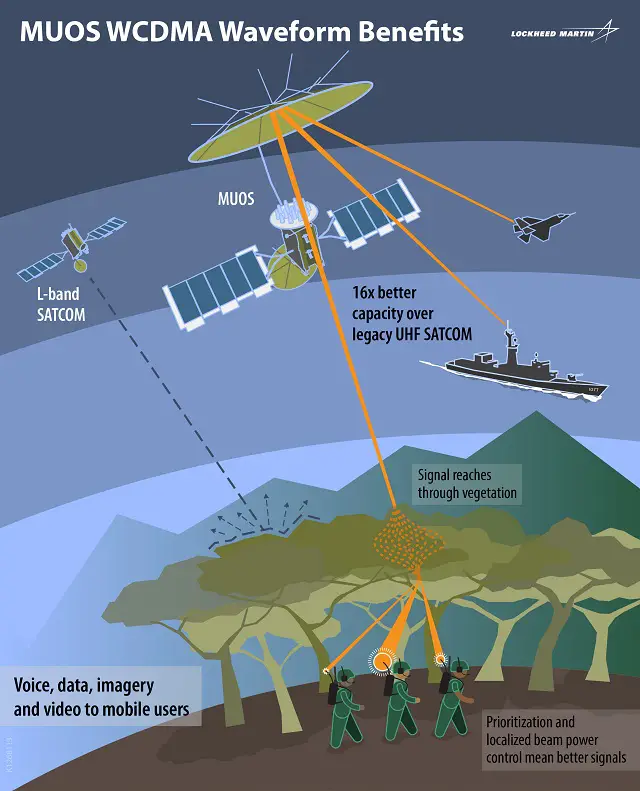|
Lockheed
Martin Completes Work on U.S. Navy's Second MUOS Satellite |
| |
|||
| a | |||
Defense
Industry News - USA |
|||
Lockheed
Martin Completes Work on U.S. Navy's Second MUOS Satellite |
|||
Lockheed
Martin has successfully completed required system testing on the second
satellite in the U.S. Navy’s Mobile User Objective System (MUOS),
designated MUOS-2. The satellite has been placed in storage to await
its scheduled launch date in July 2013. The MUOS constellation will provide significantly improved and secure communications for mobile warfighters, including simultaneous voice, video and data services – similar to the capabilities experienced today with smart phones. The first MUOS satellite, launched February 24, and the associated ground system are currently providing legacy on orbit capability, followed by the launch of MUOS-2 in 2013. The five-satellite, global constellation is expected to achieve full operational capability in 2015. |
|||
 |
|||
“The
joint U.S. Navy and Lockheed Martin MUOS team completed an efficient
integration and test campaign of MUOS-2 and we look forward to delivering
this critical satellite for launch,” said Iris Bombelyn, vice
president for the Lockheed Martin’s Narrowband Communications
mission area. “As we continue to produce MUOS satellites, we expect
to drive even greater efficiency and affordability into our operations.” In the spring of 2013, Lockheed Martin will remove the satellite from storage, perform final spacecraft component installations and conduct a final factory confidence test in Sunnyvale, Calif., prior to shipping MUOS-2 to Cape Canaveral Air Force Station, Fla., for its launch aboard an Atlas V rocket. MUOS satellites are equipped with a Wideband Code Division Multiple Access (WCDMA) payload that provides a 16-fold increase in transmission throughput over the current Ultra High Frequency (UHF) satellite system. Lockheed Martin announced completion and delivery of the waveform last week. Each MUOS satellite also includes a legacy UHF payload that is fully compatible with the current UHF Follow-on system and legacy terminals. This dual-payload design ensures a smooth transition to the cutting-edge WCDMA technology while the UFO system is phased out. |








